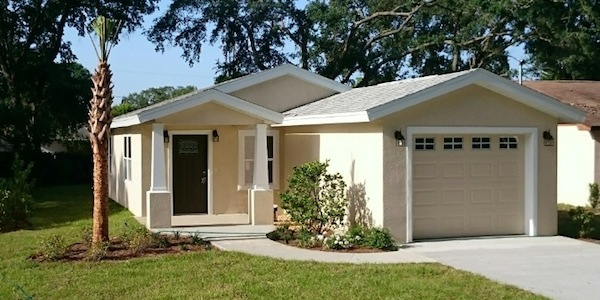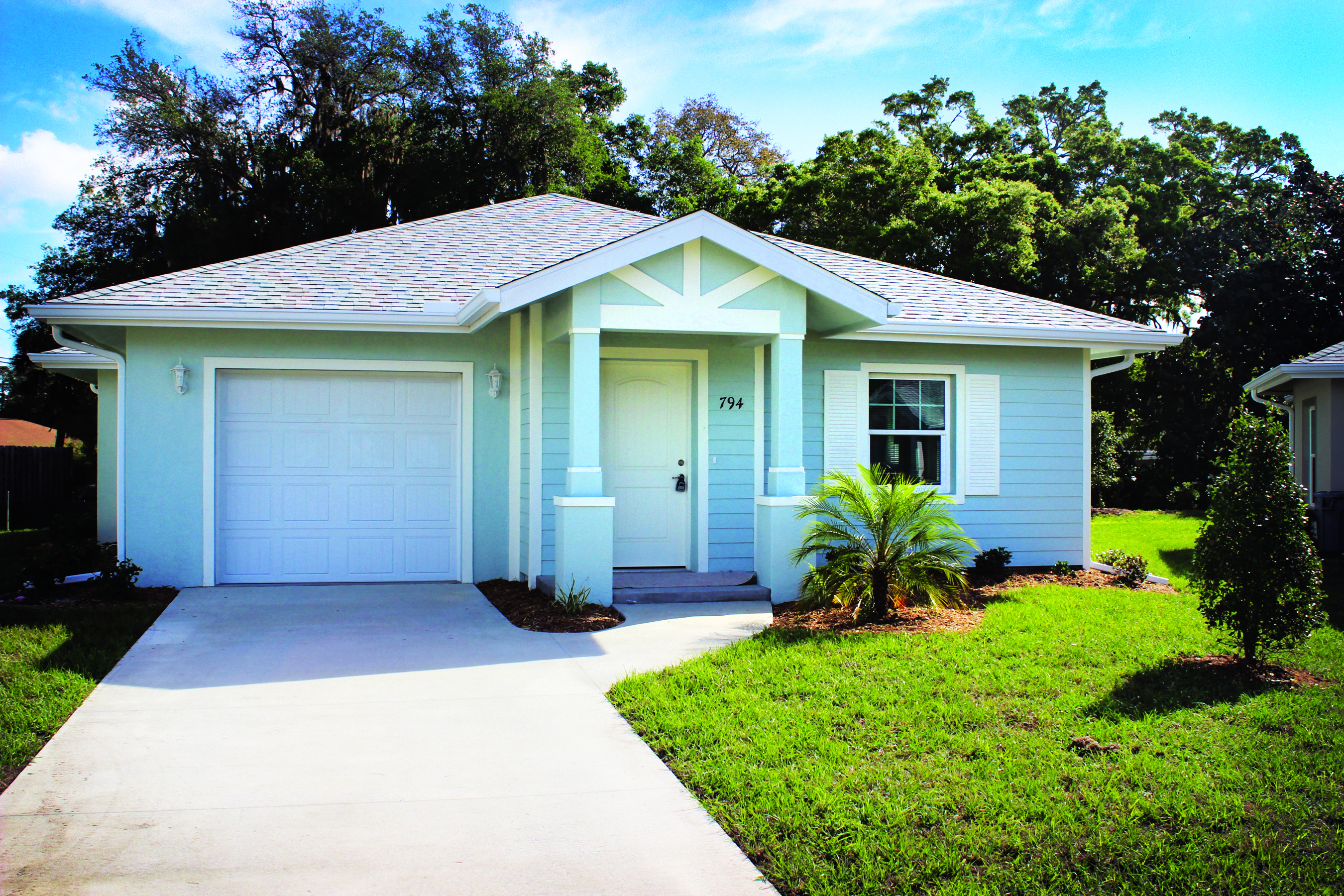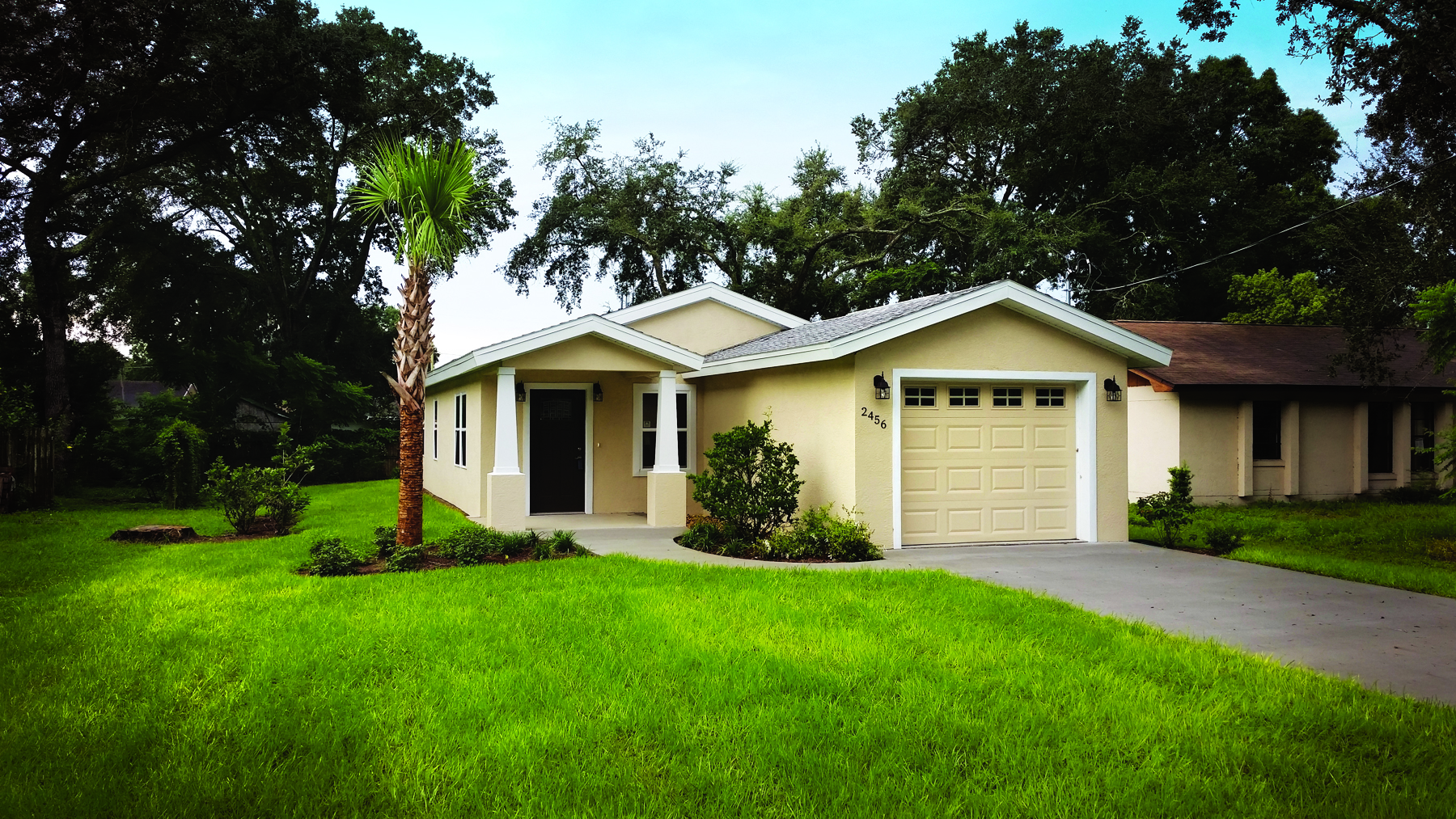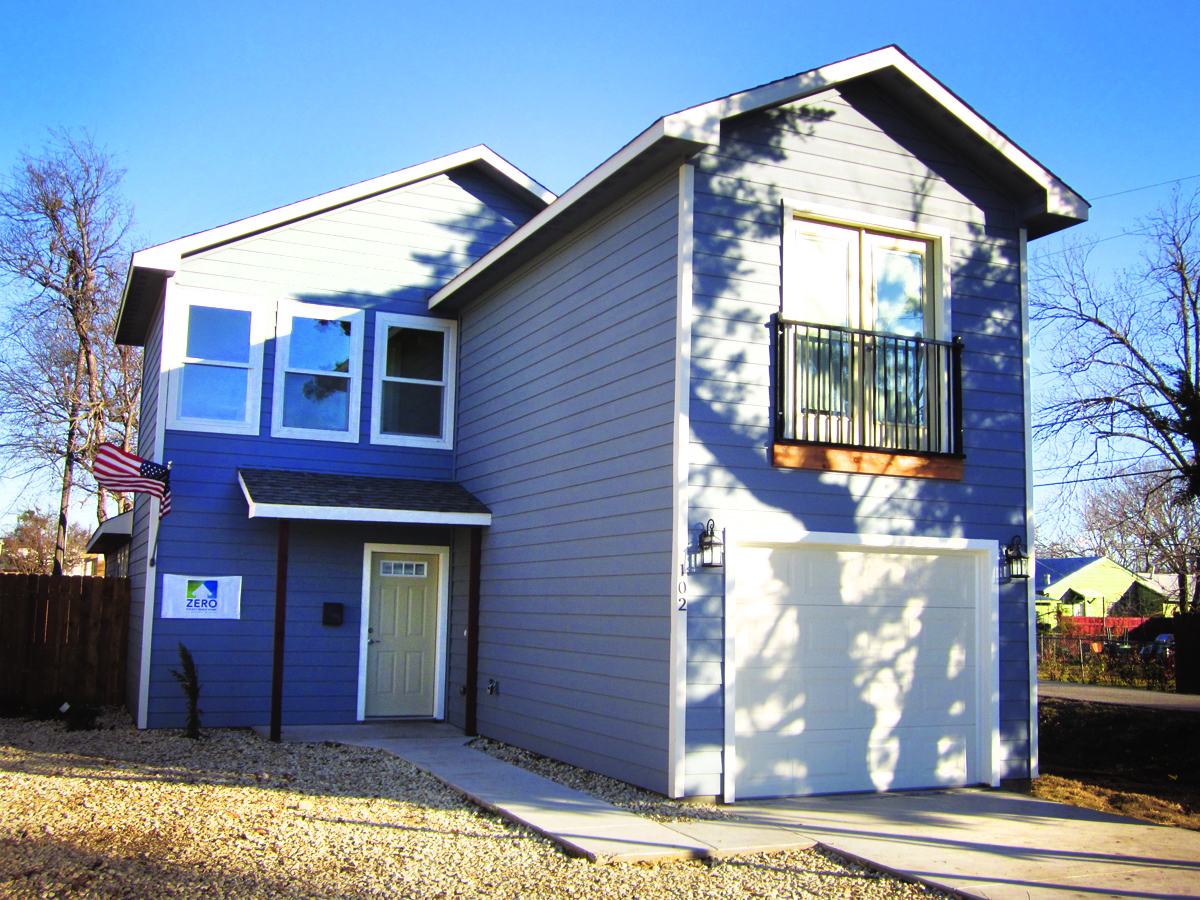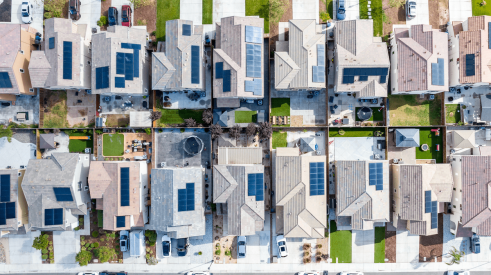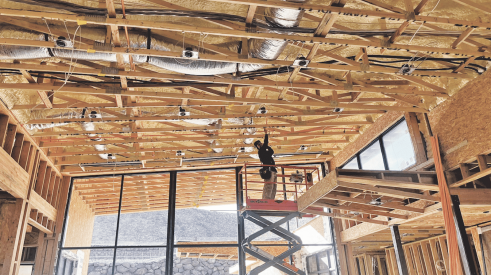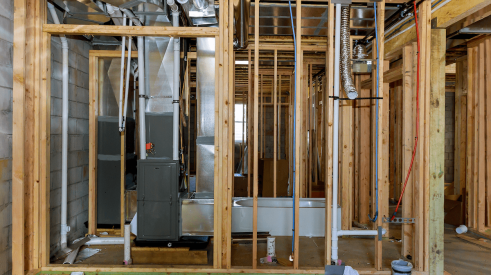Building entry-level homes that are affordable to operate is a challenge because many builders are focused on lowest first cost. This cost cutting is often at the expense of quality and results in home performance that can create steep energy bills for the homeowners most in need of reduced monthly costs. Few builders choose to take on the challenge of building entry-level homes, and even fewer also integrate a whole-house, high-performance strategy.
Ironically, improving the quality and performance of entry-level homes can actually create a positive business outcome for the builder, as well as a superior ownership experience for homeowners. Careful design and construction quality control can allow builders to maintain competitive construction costs while ensuring details that can minimize callbacks and repairs.
The following DOE Housing Innovation Award winners from 2015 make a strong business case for entry-level homes that are also high-performance.
Laurel Gardens No. 794, Nokomis, Fla.
Habitat for Humanity South Sarasota County
Low-income Americans face a disproportionate energy burden, spending, on average, more than 15 percent and as much as 50 percent of their incomes on energy, while typical U.S. households average just 4 percent, says Michael Sollitto, Habitat for Humanity South Sarasota County’s director of construction. “These families are the ones who could benefit the most from home energy upgrades,” he points out, “but they are the least able to afford them.” The Venice, Fla., Habitat affiliate is now constructing all of its homes to meet the specifications of DOE’s Zero Energy Ready Home program. “For low-income families seeking a way out of the burden of poorly constructed housing with high rent and unaffordable energy bills, the energy savings and durability that the program offers are so important,” Sollitto says. “Energy-efficient construction offers untold potential for energy savings, improvements in health and safety, long-term affordability, and lower maintenance. The money saved by our homeowners can be better used to improve the lives of their children and themselves.” The South Sarasota Habitat affiliate has built 15 DOE Zero Energy Ready–labeled homes to date. The simple one-level, three-bedroom, two-bath, 1,200-square-foot homes are true to Habitat’s mission to provide safe, decent, and affordable houses to those in need, but they go even further by ensuring that generations of homeowners experience low energy bills. The award-winning home this year, located on Dedication Court, in Laurel Gardens, is expected to cost its owners about $860 per year in energy bills, or roughly $72 per month.
Project Details
- Layout: 3 bedrooms, 2 baths, 1 floor
- Conditioned space: 1,290 sf
- Climate zone: IECC 2A, hot-humid
- Completion: March 2015
- Category: Affordable
Modeled Performance Data
- HERS Index: without PV 51
- Projected annual utility costs: without PV $860
- Projected annual energy cost savings (compared with a home built to the 2009 IECC): without PV $615
- Builder’s added cost over 2009 IECC: without PV $1,800
- Annual energy savings: 5,128 kWh
Bates Avenue, Lakeland, Fla.
Sunroc Builders
A desire to lower utility costs for his tenants prompted Scott Willemsen to found Sunroc Builders, a Lakeland, Fla.-based construction company, and begin building affordable homes that meet the energy-efficiency requirements of the Zero Energy Ready Home program. Over time, Willemsen had purchased several small 1970s- and ’80s-era homes as rental properties. But although the rents were low, high utility bills were making the homes unaffordable for the tenants. “I was hearing a lot of complaints about their electricity bills,” Willemsen says. Tenants were paying $200 to $300 per month for electricity, while their friends living in homes twice as large were paying less.
Willemsen decided it was time to start replacing the homes he had with new, energy-efficient ones, and he began researching energy-efficient construction methods. During his investigation, he discovered structural insulated panels (SIPs), and further research of SIPs construction led him to Ted Clifton of Zero-Energy Home Plans (zero-energyplans.com). Clifton told Willemsen about the DOE Zero Energy Ready Home program and designed Sunroc Builders’ first DOE Zero Energy Ready qualifying home, a 2015 Housing Innovation Award winner.
Project Details
- Layout: 3 bedrooms, 2 baths, 1 floor
- Conditioned space: 1,104 sf
- Climate zone: IECC 2A, hot-humid
- Completion: May 2015
- Category: Affordable
Modeled Performance Data
- HERS Index: without PV 57
- Projected annual utility costs: without PV $870
- Projected annual energy cost savings (compared with a home built to the 2009 IECC): without PV $500
- Builder’s added cost over 2009 IECC: without PV $11,000
- Annual energy savings: without PV 4,364 kWh
McKinley Project, Garland, Texas
Carl Franklin Homes / Green Extreme Homes
These homes were constructed through a public-private partnership including Carl Franklin Homes, the nonprofit 501(c)(3) Green Extreme Homes Community Development Corp., the City of Garland, several for-profit businesses, and former Dallas Cowboy Roger Staubach’s organization, Allies in Service.
Built to meet the DOE’s Zero Energy Ready Home standards, this project is one of about 75 affordable homes that Carl Franklin Homes built in collaboration with Green Extreme. (The partners won a DOE Housing Innovation Award in 2014 for an existing home that also meets the DOE Zero Energy Ready Home criteria and was retrofitted for another veteran).
The energy-efficient home has low-maintenance exterior cladding, low utility costs, superior indoor air quality, and a drought-tolerant landscape—all at an affordable cost. The couple was able to purchase the home at a discounted rate of approximately $125,000 and received down-payment assistance from the city totaling about $10,000. The energy-efficiency features and the solar electricity panels on the roof will provide the homeowners with estimated annual utility savings of $1,160 per year compared with a similar size home built to the 2009 International Energy Conservation Code.
Project Details
- Layout: 3 bedrooms, 2.5 baths, 2 floors
- Conditioned space: 1,594 sf
- Climate zone: IECC 3A, hot-humid
- Completion: January 2015
- Category: Affordable
Modeled Performance Data
- HERS index: without PV 56, with PV 26
- Projected annual utility costs: without PV $1,875, with PV $1,167
- Projected annual energy cost savings (compared with a home built to the 2009 IECC): without PV $1,450, with PV $1,905
- Builder’s added cost over 2009 IECC: without PV $2,000, with PV $10,000
- Annual energy savings: without PV 6,194 kWh, with PV 13,047 kWh
Advertisement
Related Stories
Sustainability
Mention of Eco-Friendly Home Features Is on the Rise in Sales Listings
Home listing descriptions using eco-friendly terms have been rising over the past five years in line with growing consumer interest in the environment and energy efficiency
Construction
5 Steps to Cracking the Code for a High-Performance Home
As a model of energy savings, water conservation, indoor comfort and health, and use of on-site renewable energy, The New American Home 2024 offers valuable lessons
Sustainability
Which Green Building Practices Are Home Builders Using Most?
A recent report reveals which green-building practices are most popular among single-family home builders and remodelers


